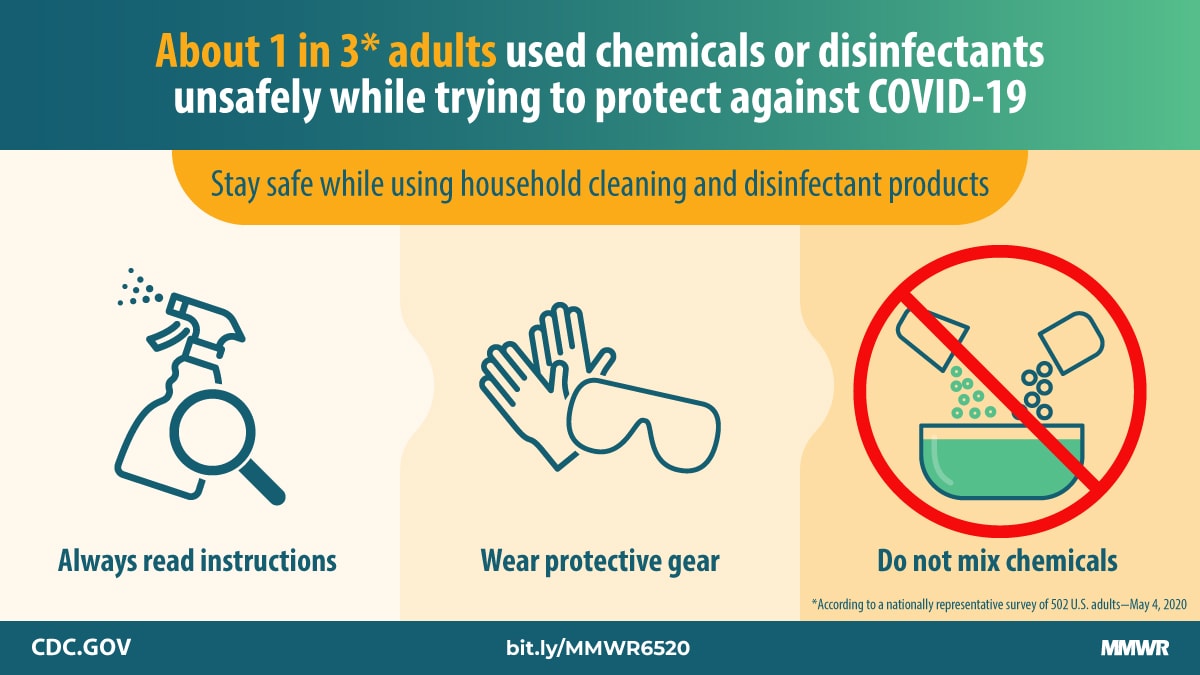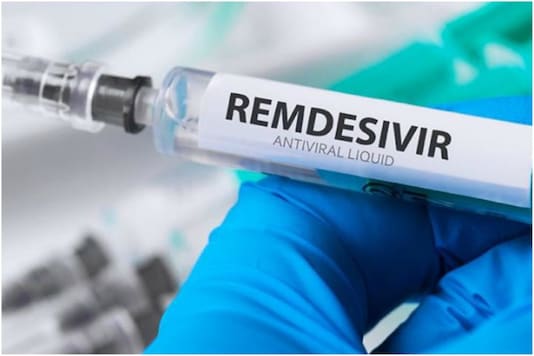Chemistry Used to Work Against COVID-19
Of course, research and development has a critical role to play too chemistry-based research institutions and companies of all sizes are refocusing their efforts towards discovering more about the virus, developing improved testing technologies, and eventually creating a vaccine. Many offer services or devices that already use cutting-edge chemical science to measure smaller samples, or achieve higher throughput. Chemistry is essential at every step of our response to the virus.
Beyond research, technicians are providing the specialist skills needed to run tests, maintain equipment and manage laboratory supplies - including the donations of chemicals for hand san and safety equipment that are going straight to doctors and nurses on the front lines.
Chemical Impacts in Fighting COVID-19
The coronavirus pandemic has been accompanied by an increase in chemical exposures due to more frequent and widespread use of disinfectants, hand sanitizers, and cleaning products and PPEs, as well as uncontrolled application of other measures, such as non-prescribed medication. Improper and unsafe use of these products can lead to toxic effects in people that can be as dangerous as the virus itself. The webinar aims to provide information about chemical impact arising from different aspects of COVID-19 response, the regulatory and other measures taken to prevent or mitigate these, and to flag up potential environmental impacts of COVID-19 response measures.
Disinfectant Against CORONA-VIRUS
Disinfection with the use of chemicals and sterilization method is a common practice to remove pathogenic microorganisms. Disinfection is a procedure that involves the use of a chemical agent to eliminate virtually all recognized pathogenic microbes, but not necessarily all types present on inanimate objects. Sterilization is the complete elimination or destruction of all forms of microbial life and is mostly carried out in health-care facilities by using physical or chemical method. Steam under pressure, dry heat, UV-light, ethylene oxide gas, hydrogen peroxide gas plasma, and liquid chemicals are the principal sterilizing agents used in healthcare facilities. In addition, thorough cleaning is also essential before disinfection and sterilization.
Cleaning is the removal of visible soil particles (inorganic and organic materials), from objects and surfaces and is normally accomplished manually or mechanically using water with detergents or enzymatic products. If these inorganic and organic materials remain on the surfaces, it interferes with the effectiveness of disinfection and sterilization processes. Because of certain limitations of sterilization methods, disinfection method became the widespread and commonly used method in the hospitals, household area (kitchens and bathrooms), and outdoor space to kill infectious microorganisms. Major advantages of disinfectant are the wide-availability, cost-effective, range of usage on most surfaces and objects without need of any mechanical equipment.
A large number of chemical disinfectants are used in the health care and household setting that include alcohols, chlorine, and chlorine compounds (bleach), formaldehyde, glutaraldehyde, standard and improved hydrogen peroxide, iodophors, peracetic acid, phenolics, and quaternary ammonium compounds (Quats). Commercial products based on these chemicals are considered unique and must be registered with the US Environmental Protection Agency or cleared by the Food and Drug Administration.
EPA and the Centers for Disease Control and Prevention (CDC) recognize that certain viruses can be ranked with respect to their tolerance to chemical disinfectants. With this approach, viruses are divided into three subgroups based on size and their relative resistance to inactivation. First, enveloped viruses (easiest to inactivate such as coronavirus); large (50–100 nm) non-enveloped viruses (such as adenovirus and rotavirus, harder to inactivate than enveloped viruses); and small (<50 nm) non-enveloped viruses (hardest to inactivate such as rhinovirus). SARS-CoV-2 is an enveloped virus containing lipid membrane, which is easier to inactivate with the use of disinfectants and cleaning methods.
During COVID-19 public health emergency, EPA is continuing its efforts to provide critical information on surface disinfectant products that can be used to protect the health of individuals. There is a wide array of excellent disinfectants certified by EPA that can offer a range of characteristics to kill coronaviruses that are being used worldwide for disinfection, mainly in healthcare settings. There is no prefect or ideal disinfectant until now. summarized the list of effective chemical disinfectants that claims for use against coronavirus. Almost all the chemical disinfectants are composed of some type of soap, oil, or surfactant, either natural or manmade.
The majority of products used to disinfect contain the active ingredient quaternary ammonium (Quats) while others contain mixtures of hydrogen peroxide, peroxyacetic acid, isopropanol, ethanol, sodium hypochlorite, octanoic acid, phenolic, triethylene glycol, L-lactic acid, or glycolic acid. In most instances, a given product is intended for a specific purpose and is to be used in a certain manner. Therefore, the label should be read carefully to ensure that the right product is selected for the intended use and applied in an efficient manner. Additionally, caution must be exercised to avoid hazards with the use of cleaners and disinfectants. Otherwise, disinfectant can cause different types of toxicity upon mishandling, inappropriate storage, or extensive regular application.
Toxic Effects of Disinfectants
As COVID-19 spreads across the globe, the increased use of disinfectants might lead to worldwide secondary disasters in human health and ecosystems. Extensive research has been done previously at exposure to most frequently used disinfectant compound, that is, quats, sodium hypochlorite, hydrogen peroxide, alcohol, and glutaraldehyde. All of these were linked with an increased risk of chronic obstructive pulmonary disease (COPD), asthma, and eye irritation on health workers and individuals when used regularly. Chemical residues left on a surface can become airborne and inhaled, and often contribute to poor indoor air quality with consequences for the asthmatic, allergic people.
These residues contain chemicals that can cause cancer, reproductive disorders, respiratory ailments (including occupational asthma), eye and skin irritation, central nervous system (CNS) impairment, oxidative damage, and other human health effects. Quats have been shown to possibly cause fertility issues in male and female reproductive processes. In the US, researchers estimate that 5% of childhood cancer and 30% of childhood asthma are related to chemical exposures.
COVID-19 situations created havoc, and people are using several kinds of disinfectant simultaneously to clean their home and surroundings. Recent survey identified important knowledge gaps in the safe preparation of cleaning and disinfectants among adults. Serious undesirable effects may result due to the mixing of different cleaning products, as this can generate hazardous fumes/gases. Chronic exposure to these gases can induce asthma and chronic bronchitis.
The mixing of bleach with ammonia-based cleaners causes the production of chloramines and possibly ammonia that can volatilize. On the other hand, when bleach was mixed with an acid-based cleaner, it could release gaseous chlorine or hypochlorous acid, which if inhaled, even in small amounts, may cause acute lung injury. In addition, chlorine disinfectants could combine with nitrogen, forming chloramine or N-nitrosodimethylamine, which have been identified as carcinogens. Mixing bleach and alcohol creates chloroform, which is toxic and dangerous when inhaled or when it comes in contact with the skin. To avoid this challenge, there should be proper information available in the public domain about the toxic effect of disinfectants, when used in combination, wearing skin and eye protection for potential splash hazards, ensuring adequate ventilation, and storing and using chemicals out of the reach of children and pets.
The ingredients used in commercial disinfectants are strongly encouraged by the EPA to be “biodegradable.” There are many advantages of biodegradability for cleaning products; however, several implications are also associated with it. Those “biodegradable” disinfectants on the surface when not rinsed properly after use, will leave an active chemical residue. This will make a surface act like an adhesive and attract dirt, dust, grease, grime, flesh, and pollens, which provide a food source for mold and other microbes. Therefore, a well-executed cleaning and sanitization program should strictly consist of two steps: cleaning and then application of a disinfectant/sanitizer.
Alcohol-based hand sanitizers (ABHRs) are recommended by CDC for hand hygiene and have been effective against viruses. The chemical constituents of hand sanitizers normally include 60–90% ethyl alcohol or isopropyl alcohol along with glycerol, and additional chemical ingredients for fragrance or color. These constituents while using often get aerosolized due to vigorous and frequent rubbing and may generate potential threat to skin and eyes and can cause allergic and irritant contact dermatitis, mild to moderate inflammatory effect, similar to allergic conjunctivitis.
Although COVID-19 is spread by the airborne route, air disinfection of cities and communities is not recommended by CDC. The widespread practice of spraying disinfectants and alcohol in the sky, on roads, vehicles, and personnel has not been proven to reduce the risk of COVID-19. These chemicals can get into sewage systems and can pollute drinking water resources. Both the direct runoff and indirect sewage effluents will eventually end up in lakes and rivers, putting aquatic ecosystems and wild life at risk. Increased chlorine disinfectant level can directly harm organisms by destroying their cell walls or damaging their proteins by oxidation.
Secondly, the chemicals in the disinfectants can bond with other materials to form harmful secondary by-products, such as trihalomethanes or halo acetic acids. These by-products have been shown to be very toxic to aquatic organisms. China uses ozone against SARS-CoV-2 in hospitals or home. High exposure of ozone and secondary air pollutants on the residents could lead to serious health risks. Some of the cleaning products contain persistent, bio accumulative, and toxic chemicals (PBTs), which classified as hazardous waste, and/or otherwise contribute to environmental pollution during their manufacture, use, or disposal.
Along with chemical disinfection, UV-disinfection is another practical sterilization method against microbes. During COVID-19, some people also tried UV-light to disinfect themselves. The efficacy of UV-disinfection against SARC-CoV-2 is yet to be discovered. Though exposure of UV-light or LED light cannot be used on humans to inactivate the COVID-19 virus. It would cause burning and potentially skin cancer.
Texas A&M University chemist Wenshe Ray Liu and his research team have focused their lab solely on searching for drugs to treat COVID-19.
The researchers are working to develop drugs that can prevent SARS-CoV-2 the virus that causes COVID-19 -- and other coronaviruses from replicating once inside human cells. They're also exploring how to counteract the effect of the viruses in human plasma.
Remdesivir is being tested in at least five large-scale clinical trials around the world and also has been delivered to some patients, including the first known U.S. case confirmed Jan. 21 in Washington. That patient recovered after compassionate use of remdesivir.
Liu is joined in his work by several additional collaborators in the Department of Chemistry and across the Texas A&M campus, including Distinguished Professor of Chemistry and 2017 National Academy of Sciences member Marcetta Y. Darensbourg, Texas A&M Provost and Executive Vice President Carol A. Fierke, who is an X-ray crystallography expert, and noted Texas A&M biochemist Thomas Meek.
Their research is supported by Liu's Texas A&M Presidential Impact Fellow funds through the Texas A&M Drug Discovery Laboratory, as well as indirectly through the National Institutes of Health, Cancer Prevention and Research Institute of Texas, and Welch Foundation funding initially provided for his group's underlying cancer-related research.
Overview
Chemistry plays an important role against this COVID-19 pandemic whether it is disinfectant or vaccine of this virus chemistry help us in all checkpoint and thanks to our doctor and scientist who make this possible.







0 Comments